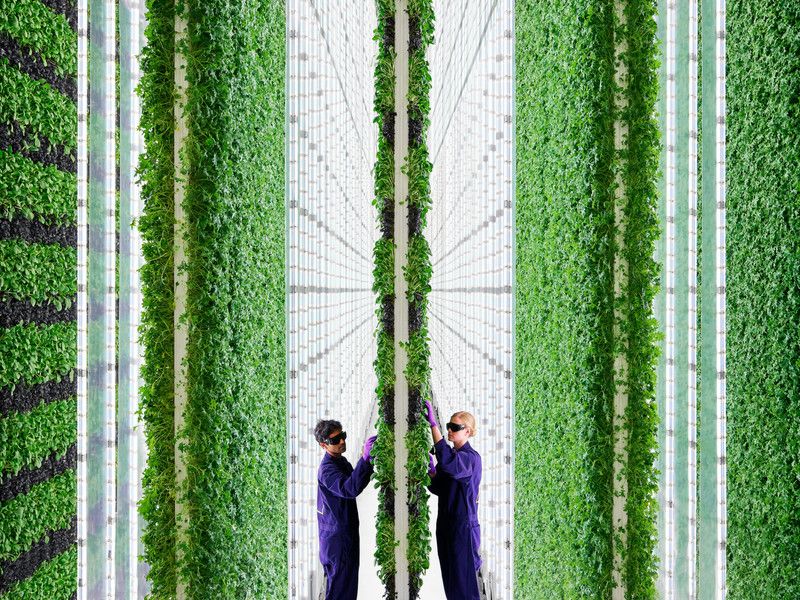
🌟 1: 360 - one hectare of vertical cultivation produces as much as three hundred and sixty hectares of traditional cultivation
Vertical crops are considered to be truly sustainable. Startups have already attracted hundreds of billions of dollars to the area.
Share this story!
The fruits, berries, vegetables and herbs of the future are grown at height, indoors. They produce as much on one hectare as traditional agriculture does on almost four hundred. The crops are of course supported by robots and AI to optimize irrigation, temperature, light and harvest.
This is not a marginal increase.
It's time for us to get acquainted with the concept of ag-tech - it is tech that is used in all forms of cultivation. (The prefix "ag" is taken from English agriculture, in the same way that ed-tech comes from education, fin-tech from finance etc.)
There are today over sixteen hundred start-ups in ag-tech, which together have already attracted capital of hundreds of billions of dollars.
Nate Storey is the co-founder of a start-up in San Francisco called Plenty . According to Nate, the crops of the future are vertical, local and take the help of both robots and AI. They have shown that it is possible.

Plenty has so far attracted investments of four hundred million USD, from Jeff Bezos (Amazon), Eric Schmidt (formerly Google) and the Japanese investment group SoftBank, among others.
The test facility in San Francisco already has agreements with and delivers to a food chain with over four hundred stores in California - so it's not just a promising idea we're talking about.
Soon, more facilities will be built, around the United States.
Plenty's solution can definitely be described as sustainable:
- ninety-five percent less water is needed than in traditional agriculture (when water that evaporates is reused)
- one hectare of vertical and AI-supervised cultivation delivers as much as three hundred and sixty hectares of land cultivation
- AI improves irrigation, temperature, lighting and best harvest time as it learns
- the placement of the plants is optimized by robots (who reposition them if necessary)
- the need for fertilizer decreases radically
- genetically modified crops are not used
- lighting is done with low-energy lamps
- the need for transport and its CO2 emissions can be radically reduced
- etc
The economy, then? According to Nate Story, it is cheaper to build a vertical farm than to buy the land that would be needed for production in the traditional way. If you also add reduced transport costs, everything indicates that we will meet this type of cultivation in the future.
Make the future come sooner!
Idea: Henrik Ahlén
By becoming a premium supporter, you help in the creation and sharing of fact-based optimistic news all over the world.


